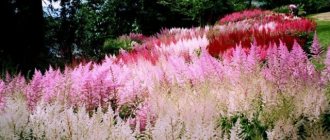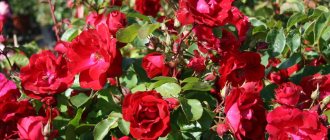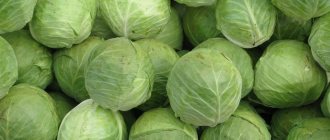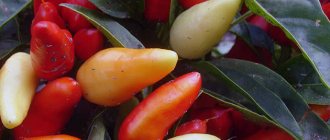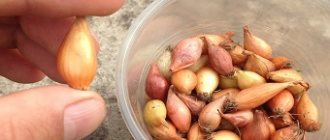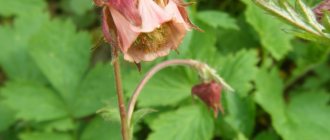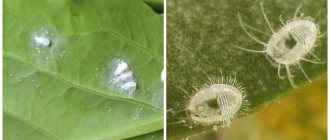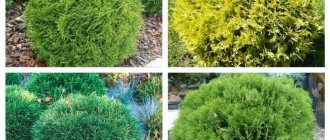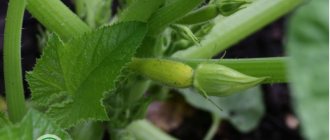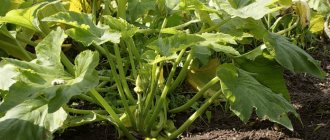Japanese quince is a valuable fruit crop. This is a member of the Rosaceae family. More famous representatives are apple and pear trees. Quince is widely used in the preparation of delicious dishes and preserves, and is a preventative against certain diseases. It has a healing effect on the gastrointestinal tract, liver, and skin.
Lately it has become more and more popular. It can be found quite often in garden plots. In order for it to grow healthy and delight you with a good harvest, you need to follow certain care rules.
Features of the variety
Japanese quince is an ancient plant variety. Its age is about 4,000 years. She began her journey across the earth from Central Asia and Transcaucasia, but she was classified as cultural only on Greek territory. Currently, it is distributed throughout Russia, but the most favorable places for it are the southern regions of the country.
For cold climates, certain varieties have been bred that are immune to frost and cold weather.
The fruit of the Japanese quince is visually similar to a pear, but the peel is covered with small and soft fluff. The appearance of small red spots is also acceptable. The Japanese plant begins to gain color during the May holidays, and the fruits ripen at the end of September. Jams, candied fruits, and marmalade are made from it.
The fruits contain:
- potassium;
- calcium;
- phosphorus;
- iron;
- sodium;
- magnesium and many other elements.
It can reach five meters in height.
Care, pruning and yield directly depend on the age and type of tree. Basically, Japanese quince bears fruit for about 35–40 years. Important! The main characteristic is slow growth. It is this factor that needs to be taken into account when choosing breeding. Frosts also negatively affect quince. It must be covered for the winter months.
Varieties of Chaenomeles-Japanese quince
Chaenomeles is represented by deciduous and evergreen bushes that grow up to a meter, or trees that reach a height of three meters.
Quince branches are densely covered with beautiful bright green foliage. The leaves have serrations and large serrate-shaped stipules. Its branches are plastic, in the form of an arc, decoratively curved. Many varieties have sharp spines 2 centimeters in size, no foliage, and only prickly thorns on the shoots.
The rhizome of the plant is rod-shaped, it is powerful and goes deep into the soil. Quince is not afraid of drought: large rhizomes can reach layers of water at great depths. Replanting an already mature plant is quite difficult; this process can damage the roots of the quince.
Quince acquires special beauty during the flowering period. Inflorescences with a diameter of up to 5 centimeters are very unusual. The standard color of quince inflorescences is red-orange, but there are varieties with pink and white flowers. Flowers are collected in tassels with an even number of flowers, most often 2-6 pieces on one tassel. The varieties with double inflorescences densely covering the arched branches look especially unusual.
Chaenomeles also produces fruits of unusual beauty. In autumn, small fruits ripen, densely covering the branches. Their color depends on the variety and can be green, yellow or orange. The fruits remain on the branches until frost, which does not affect their taste in any way. Young plants begin to bear fruit in the third year.
In the past, decorative quince was valued only for its appearance. Today, breeders are working on developing new varieties that will not have thorns and prickles, and the fruits will be even tastier. The fruits contain a lot of vitamin C, which does not disappear even when preserved.
Varieties of Chaenomeles:
- Mauleya or low quince;
- Catayan variety;
- Quince is wonderful.
Planting quince in autumn
To plant Japanese quince in the fall, you need to purchase a seedling that is 12 months old. The roots of the tree must be closed. When planting older seedlings, you should also pay attention to its root system. It must be open type. This is necessary in order to detect diseases and pests in time. It has a massive root system - this is worth taking into account when planting it on the site. It is planted at a distance of at least five meters from other shrubs, trees and outbuildings.
You may be interested in:
Schemes and timing of pruning garden trees in autumn Garden trees need care throughout the year. Their productivity and longevity depend on this. One of…Read more…
It grows on fertile, loose and light soils. The acidity level should be neutral. This is a plant that loves sunlight, that is, it needs to be planted in the brightest and sunniest place on the site. When choosing a landing site, it is worth considering that quince does not like drafts and cold winds.
The site for planting Japanese quince begins to be prepared in the spring months. It all starts with adding fertilizers and nutrients to the soil. Calculation (per square meter): 50 grams of superphosphate and 20 grams of potassium salt. Afterwards you need to dig up and water.
14 days before planting, it is necessary to dig a hole, the depth of which is 0.5 meters, and the radius is 25–45 cm. The width of the hole will be the same as the root system of the quince. Before planting, pour into the hole:
- clay;
- nutrient mixture from garden soil;
- superphosphate 150 grams;
- tree ash 50 grams.
Then a stake is driven in, which will ensure the stability of the trunk. The root system is carefully laid on top of the substrate prepared in the hole. Afterwards everything is covered with soil and trampled down. After planting, the tree is watered. One seedling requires a couple of buckets of water. Now they tie the quince by the trunk to the stake that was originally dug. In order to maintain soil moisture as long as possible, the ground is sprinkled with peat or humus.
How to plant common quince
Common quince is grown in the form of a bush or tree; it grows from two to seven meters in height. In order for the plant to develop well, it must be protected from drafts and provided with good lighting during the day.
The roots of the plant are located in the surface layer at a depth of up to 70 cm, but they grow quite far in width, up to 2 meters. Quince can be planted next to apple and pear trees, but at a distance of 5 meters.
An adult tree does not tolerate transplantation well; we plant the seedling immediately in a permanent place. For abundant fruiting, it is recommended to plant several varieties of common quince on the site.
Quince grows well on turf soil, black soil, clay soil and loam. If the soil is sandy, a layer of clay must be placed at the bottom of the planting hole.
Quince can be planted when the groundwater level is high; the plant can tolerate prolonged stagnation of water without negative consequences. We dig shallow planting holes, 40 cm; their size is 60 x 60 cm. Leave at least 4 meters between plants.
Add fertilizers to the soil for planting:
- ash – 50 g;
- superphosphate – 150 g.
Fill the hole with soil mixture a few days before planting and pour a bucket of water into it. Planting stages:
- We remove some earth from the hole.
- We place the seedling in the hole, making sure that the root collar is at soil level.
- We straighten the roots horizontally and cover them with soil.
- We form an earthen roller 5–7 cm high along the perimeter of the crown to retain water.
- Pour 3 – 4 buckets of water into the tree trunk circle.
- We mulch the planting area with peat, rotted sawdust or dry leaves. When planting in spring, the layer thickness is 5 cm, when planting in autumn - 10 cm.
- If the roots of the seedling are damaged, its shoots can be shortened by 1/3 of the length and half of the leaves removed. These measures will help the plant’s root system recover faster.
The seedling can be planted in spring and autumn. The best option is spring planting. Over the summer the plant will get stronger and will survive the winter well. We plant the seedling in the garden only after the threat of return frosts has passed.
Growing and care
Quince is an unpretentious plant. To get a good harvest, it is enough to carry out simple agrotechnical measures in a timely manner. Quince is propagated by seeds, cuttings and root shoots.
Propagation of quince by cuttings (video):
Watering
An adult plant will easily tolerate drought; young seedlings must be watered regularly. During the growing season, an adult quince is watered 3 times:
- before flowering begins;
- in June, for better development of the tree;
- at the end of summer, for better fruiting.
One tree will require 40 buckets of water to properly moisten the tree trunk. Before watering, we loosen the soil to a depth of 10 cm, after which we mulch with a thick layer of cut grass (up to 25 cm) to retain moisture.
Top dressing
Quince responds well to feeding. We apply fertilizers after watering so as not to burn the roots.
- In the spring, when loosening, we apply nitrogen fertilizers to the tree trunk circle - 30 g per 1 sq. m.
- In summer, the plant can be fed with organic fertilizers, an aqueous infusion of chicken droppings or slurry.
- In the fall we feed with potassium and phosphorus fertilizers, adding 20 g per 1 sq. m. and dig up the soil to a depth of 10 cm.
Pest and disease control
Quince has a strong immune system, but preventive spraying will not hurt. We treat with copper preparations 2 times during the growing season; you can use Bordeaux mixture (3% solution):
- in early spring before buds open;
- in the fall, after harvest.
In pest control we use traditional drugs - Karbofos, Iskra, Fitoverm and others. We stop treating with insecticides a month before harvesting the fruits. The exception is biological products such as Fitoverma; they can be used a week before harvesting.
Trimming
Quince is subjected to sanitary and formative pruning to increase the yield and give the plant the desired shape. In autumn, it does not go to rest for a long time, keeping the leaves on the branches. Therefore, during this period it is advisable to limit yourself to sanitary pruning. In summer, quickly growing shoots are pinched. It is better to prune quince in early spring, before the buds wake up.
- We cut off all damaged and frozen shoots.
- We shorten last year's growth by 1/3 (branches up to 50 cm) and longer shoots by ½.
- We cut out the tops (vertically growing branches).
- We cut out the branches that thicken the crown.
How to trim a quince (video):
Formative pruning must be done for 5 years, after which you can limit yourself to only sanitary pruning. When growing quince in the form of a tree, the lower tier of branches should be located at a height of 50 cm from the measles neck or grafting site. To grow in the form of a bush, an annual seedling is shortened at a height of 40–50 cm and 4–5 skeletal branches are left growing at different angles.
Fruit harvesting
The fruits take a long time to ripen. They are removed only when they turn yellow and become fragrant. Depending on the variety, harvesting can be done in September - October. The photo shows quince fruits.
Preparing for winter
Before the onset of cold weather, moisture-recharging irrigation should be carried out using at least 40 buckets of water. The quince root system is located close to the soil surface, so there is a risk that it may be damaged by frost.
- In the fall, we mulch the root area with a layer of rotted manure.
- We cover the grafting site and the root area of the trunk with spruce branches.
- We cover young seedlings with spruce branches.
In places with harsh winters, quinces are wrapped in non-woven material (spunbond, lutrasil) and tied with spruce branches.
Growing rules and care
To ensure that your efforts in growing quince are not in vain, and that you enjoy the harvest every year, you should follow a few simple rules for caring for the tree:
- The area where the Japanese plant is planted should be well lit, as it is a light-loving plant.
- The soil should be light, sandy loam, loamy or wood-podzolic. Acidity below pH5.
- The place for planting seedlings is chosen on the south side of the site.
- There are no drafts or severe frosts.
- In cold regions, Japanese quince are covered for the winter. To do this, the soil around the trunk is covered with fallen leaves, spruce paws or sawdust. The crown is covered with cardboard or wooden shields. Also, filling the trunk with snow would be an excellent option for protection from the cold.
- If the summer turns out to be dry and little rainy, then watering is carried out at least six times per season. The first watering occurs before the tree begins to bloom. Second, after this process. The third is after the flowers have completely fallen. The fourth occurs when active growth of shoots occurs. The fifth watering is 21 days after the last. And finally, the last watering should be carried out when the period of fruit ripening begins.
What to cook from quince
You can prepare a lot of tasty and healthy dishes from the harvest you collect. Here are some of them.
Quince jelly
You will need: 1 kg of quince, 400 g of sugar, 2.5 glasses of water, 1/2 tbsp. gelatin.
Preparation. Prepare the gelatin solution in advance. To do this, boil 1/2 cup of water and cool to a temperature of 70-80°C. Dissolve gelatin in water with constant stirring, strain. Wash the quince fruits thoroughly and cut them into slices along with the seeds, then place them in a saucepan and add 2 cups of water. Place on low heat and cook until completely softened, then strain through 2 layers of gauze, but do not squeeze. Pour the resulting juice into a saucepan, heat over low heat and add sugar. Stir and add gelatin. Cool, place in a glass container and refrigerate until completely thickened.
Quince puree is prepared using the same principle, except that gelatin is not added to its composition, and water is poured into a container for preparation immediately, along with quince and sugar.
Quince and pear smoothie
You will need: 150 g of quince, 150 g of pear, 200 ml of kefir, mint, cinnamon and sugar to taste.
Cooking . Wash the quince and pear, remove stems and seeds, cut into large pieces and place in a blender. Add kefir, cinnamon and sugar there. Whisk, pour into a wide glass, and top with mint leaves.
Quince jam
You will need: 1 kg of quince, 1 kg of sugar, 1/2 small lemon, 1/2 glass of water.
Preparation. Rinse the quince, dry it, remove stems and seeds, cut it into small pieces and place it in the container in which you will make the jam. Add sugar and water there. Place on low heat and cook until fully cooked, periodically skimming off the foam. Grind the lemon in a blender and add to the jam 5 minutes before it is ready. Mix well. When the jam is ready, remove from the heat and place in sterile jars. Close with sterilized lids and cool. Store quince jam in a cool place.
Dear readers! If you already have experience growing common quince on your site, share it with us in the comments.
Feeding quince
It is necessary to feed the tree throughout the growing season.
- Spring. Mineral and organic fertilizers are added to the soil.
- Summer. Fertilizing is carried out with nitrogen-containing, phosphorus and potassium fertilizers. Thanks to them, the harvest increases.
- Autumn. Mineral and organic fertilizers are used. They help quince prepare for winter.
Important!
For the first 12 months, quince does not require additional feeding. The fertilizers that were applied to the soil before planting will be enough for her.
Features of quince growth
Japanese quince is characterized by the appearance of many shoots (more than 1 meter in length). This active growth occurs in the first years of a tree's life. Their growth becomes slower during the fruiting period. The places where the ovaries form may vary. This is influenced by the type of tree.
Fruiting on young trees and low-growing varieties occurs on long annual growths. The remaining representatives bear fruit on the branches. Such branches grow for more than a year and are generative. They can be harvested within five to ten years. The main branches are located evenly along the trunk, sunlight should freely penetrate into the entire crown.
Pruning quince in autumn: diagram
During the pruning procedure in the autumn season, the most important thing is that the tree must be trimmed in such a way as to cause minimal harm to it. There is a specific scheme for this.
In order for the pruning of Japanese quince to go smoothly in the fall, and for the tree to grow and bear fruit perfectly, you need to remember one thing! The more light, the more abundant the harvests will be.
At five years old, Japanese quince should have the following parameters:
- the tree reaches a height of at least 0.6 meters;
- lateral main branches of at least ten pieces;
- The angle between the main branch and the trunk is 45 degrees.
The crown of the quince should be in the shape of a bowl. The greenery is spaced evenly so that the light penetrates all the shoots of the tree equally.
Young quince are pruned regularly. It is at this time that the crown of the tree is formed. Upon reaching six years of age, the amount of pruning is reduced and carried out only when necessary.
- In the first year of growth, the quince needs to be pruned in order to form the upper tier of the main branches. The distance between them is seven buds. There are five shoots in one tier. They should be directed in different directions, and the distance is about 12 cm. Also at this age, the second tier of the crown is formed on the tree. The distance between the first and second is about 40 cm.
- In the second year of life, the branches of the second tier are cut by 0.5 meters. The main task for the gardener is to form the third tier. Since this is the basis of a mature tree. All branches are pruned by 0.5 meters.
Important!
The outermost bud on the trunk of the main branch should be directed towards the sky. Caring for Japanese quince in the fall involves proper pruning.
Trimming tools
In order to perform high-quality pruning and not cause much damage to the Japanese quince, the equipment must be sharp, free of rust, and in clean and excellent condition.
For the pruning process itself, use:
- Secateurs. They cut branches with a diameter of 24 millimeters. Visually, this tool is similar to pliers. There are pruning shears with two types of sharpening - on one side and on both sides. There are quite a lot of species. But they all have rubber handles that reduce the slipping of the tool in your hands.
- Knot cutting tool. It has long handles. It copes well with cutting thick branches (diameter up to 49 mm) and plants with thorns and thorns. This tool is large in size, but it is much more convenient to work with than with a pruner.
- Hacksaw. It helps to get rid of dry branches of various sizes. The blade is carbon steel, the handle has a rubber base. The weight of the equipment should be light.
- Garden saw. Used for cutting living branches, as it does not leave jagged edges.
- Gardening scissors. The blades are slightly longer than those of tin snips. They are used in pruning small branches and bushes.
Ways to rejuvenate wood
Thanks to constant pruning, the fruiting period of quince can be increased to fifty years. It is this process that leads to the rejuvenation of the tree. It goes like this:
- Branches that are three years old are pruned.
- Shoots that were formed at the age of 4–7 years are removed.
- If deep pruning occurs. It is necessary to remove branches that were formed between the ages of 10 and 12 years.
- The main thing is that rejuvenation of Japanese quince occurs only if 2/3 of all branches are removed.
Important!
When heavily pruned, Japanese quince needs to be fed.
Japanese quince or Chaenomeles is naturally endowed with unforgettable beauty, and the fruits are beneficial for human health. It can deservedly take pride of place in any orchard. With proper care and care, the first harvest can be obtained within 3-4 years after planting in a new place. To grow a fruitful tree you need to follow all the rules. Then the tree’s productivity will be high, and the fruits will delight with their unforgettable taste.
Quince diseases and pests
The most common diseases are moniliosis, powdery mildew, rust, gray mold, ovary rotting, browning of leaves; among pests - leaf miner, slightly less - aphids, apple codling moth, apple flower beetle and apple false bark beetle.
The most effective control method is considered to be a combination of tree treatments against diseases and pests.
Treatment of quince against diseases:
- Before buds open, use a 3% solution of Bordeaux mixture in combination with any compatible fungicidal agent.
- In the phase of pink buds - Confidor or Horus.
- After flowering - Fundazol solution. After fruit set, use Horus or Strobi solution.
- After harvesting, use a 2-3% solution of copper sulfate (spray the tree crown with it).
Treatment of quince from pests:
- In the phase of pink buds - to choose from: Confidor with the addition of Fundazol solution; Aktara or Inta-Vir; Confidor mixed with Aktara and Decis.
- After flowering - Confidor with Baktofit and Mospilan.
- After fruit set - Kemifos with Mospilan or Decis.
Drugs must be administered in the volumes specified in the instructions supplied with them. Large beetles are collected by hand before processing the trees.
